Mohair is known for its soft, airy texture.
If you’re wondering “How do I finish mohair properly?” — this guide is for you.
In this article, I document my first attempt at finishing a mohair sweater using a professional method.
Note: In the demonstration shown in this article, I did not use a laundry mesh bag.
However, I recommend using one from the pre-soak through the rinsing stages.
If you want to read the Japanese reference article I relied on, please use a translation tool to view it in your language.
The Correct Way to Finish Mohair
While researching proper mohair finishing techniques, I found a highly reliable Japanese resource written by a professional knit expert, “60rokumaru,” on the KNITLABO BLOG.

According to the article, these steps apply not only to mohair but to most yarn fibers.
Summary of the Recommended Blocking & Finishing Process
- Steam with an iron
- Pre-soak (no detergent)
- Main wash (with delicate-garment detergent)
- Rinse
- Remove excess water
- Dry flat
I had no idea you were supposed to steam and pre-wash knitwear first.
Below is the explanation from the referenced article about pre-washing:
Pre-wash:
Soak the item in 37–40°C water for 30 minutes to 1 hour.
Do not add detergent at this stage — adding it early reduces the detergent’s effectiveness later.
This temperature range also helps remove oils and residue.This step is essential. Skipping it may lead to more pilling and poor detergent penetration.
This makes sense — so I followed the professional method to finish my mohair sweater.
Blocking a Mohair Sweater
Here is the mohair sweater I worked on:
Pattern: ite sweater by amuhibiknit
Yarn: ISAGER Kid Silk Mohair + Highland Wool

Step 1 – Steaming (Iron)
Until now, I never steamed my knits before blocking, but since mohair is delicate, I followed the correct method.
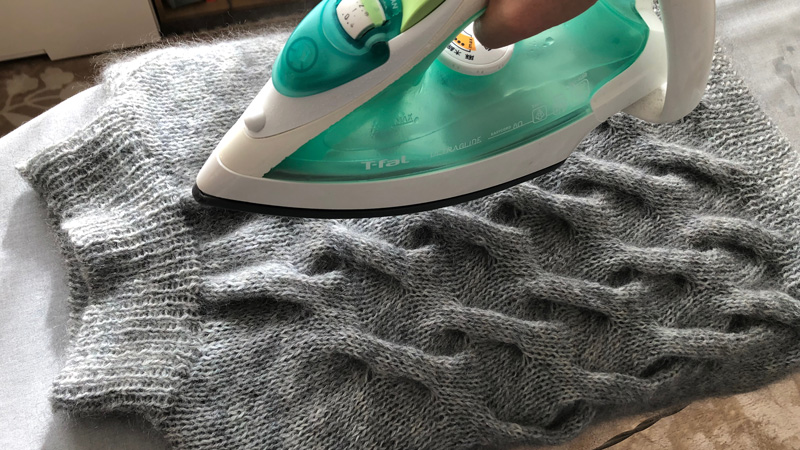
Gently steam both the front and back sides.
Step 2 – Pre-wash (No Detergent)
Next, pre-wash the sweater without detergent.
Indoor temperature: approx. 19°C
Winter conditions → water cools quickly → I used 43°C hot water from my heater.

Soak for 1 hour, then drain.

No noticeable dirt surfaced.
Step 3 – Main Wash
Refill the basin with warm water and add a delicate-wear detergent.
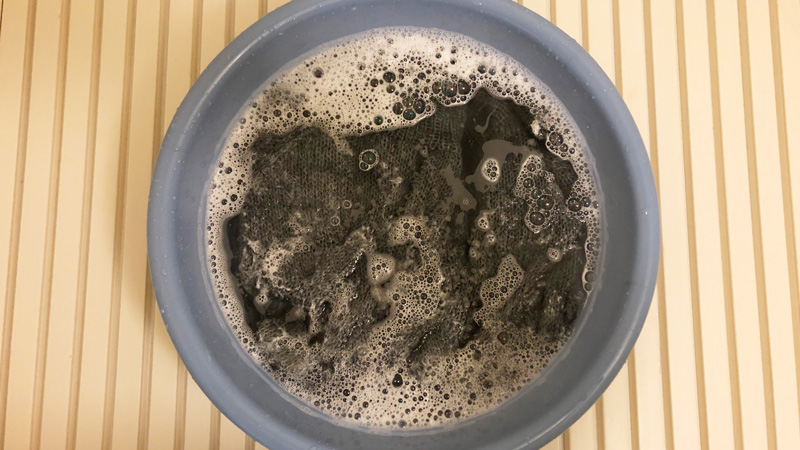
The reference article mentions that yarns with high oil content will release visible oils when detergent is added,
but in my case, that didn’t happen.
I found one unclear part of the reference instructions:
Press-wash gently three times. Do not rub or wring.
At first I thought:
“Do I just press the sweater three times in the same basin?”
But I realized it means:
Fill basin → add detergent → press-wash → drain → repeat ×3
So that’s how I did it.
Step 4 – Rinse
Since I couldn’t visually tell how much residue remained, I continued replacing the water until the bubbles disappeared.

After four water changes, it looked like this.
Rinse frequency depends on the yarn and project.
Step 5 – Spin-dry
The reference recommends using a washing machine’s spin cycle,
but I chose to hand-extract water this time.
Press the sweater gently against the basin wall to remove excess water,
then lay it on a towel, shape it, and roll it up.

Leave it rolled for about one hour.
Step 6 – Air Drying
Dry flat indoors.
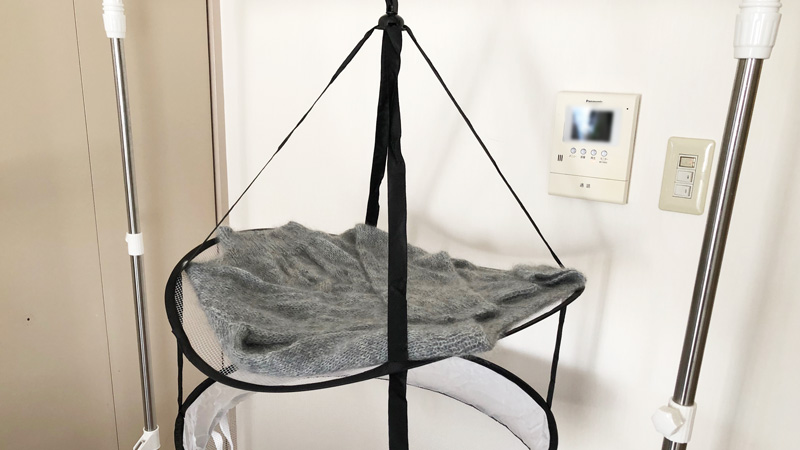
Even in dry winter indoor air, it took two days to dry completely.
I expected mohair to bloom after blocking,
but honestly, I didn’t see a big difference.
Final Steam Finish
According to 60rokumaru, steaming on a cushion helps produce a smoother finish.
I used a cat cushion with a sheet of muslin to protect from pet hair.
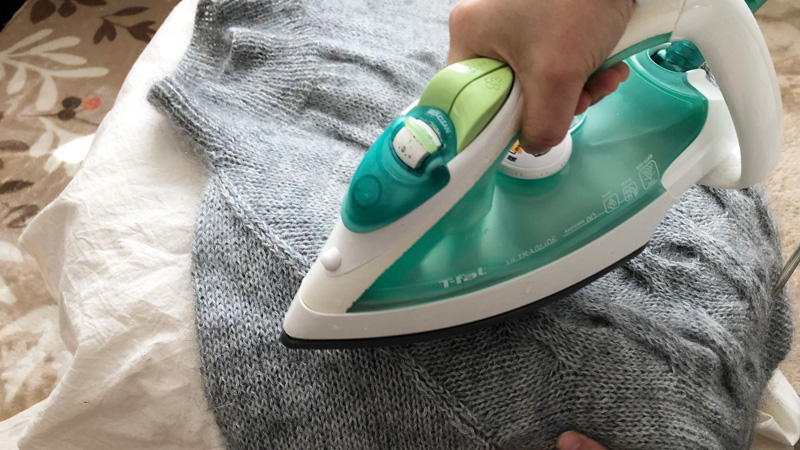
This method was much easier than using an ironing board —
the larger surface prevents constant repositioning.
This completes the mohair finishing process.
Summary
This was my first time knitting and blocking a mohair sweater,
and I followed the professional finishing method instead of my usual improvisation.
What I learned:
- Steam before washing
- Pre-wash (soaking)
- Main wash (three rounds of gentle press-washing)
And the results?
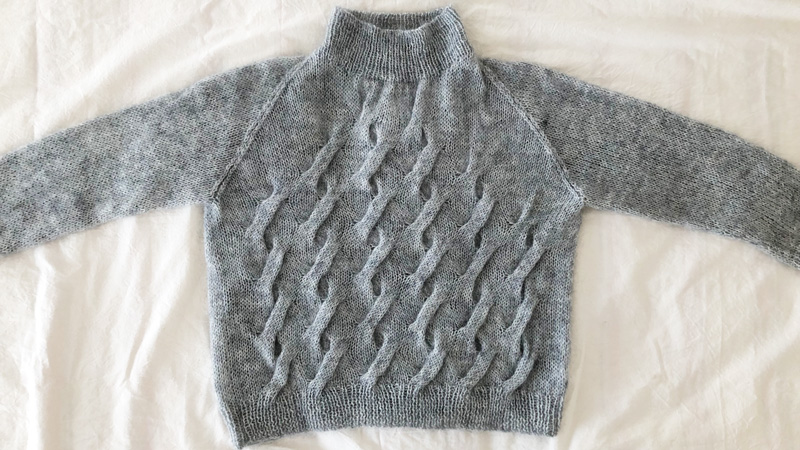
The shape and stitch definition improved after blocking,
but the “fluffy bloom” did not increase as much as I expected.
Maybe this yarn behaves differently?
The reference article states:
If the texture doesn’t bloom as expected, repeat the finishing process.
High-quality fibers like alpaca, mohair, and cashmere often improve with repeated washing.
So perhaps the softness and halo will increase after future washes.
For now, I’m satisfied that I finally learned the correct way to block and finish mohair.
When I eventually wash this ite sweater after wearing it,
I’ll report whether the texture improves with repeated washing.
If you’re unsure whether you should block your mohair project —
the answer is YES.
Don’t be afraid — go ahead and block it!
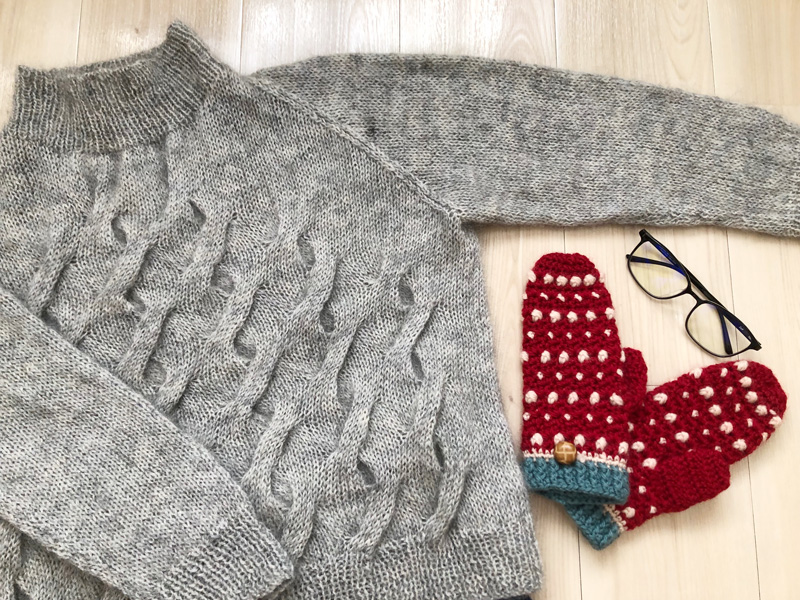

👉 amuhibi KIT | ite